Plastic gears are primarily recognized for their quiet operation and resistance to rust – attributes that are important in the food processing, medical equipment, and chemical processing industries, as well as in consumer applications. But plastic gears offer many other benefits, and advances in materials and manufacturing processes are helping to close the remaining performance gap between plastics and metals in gearing applications.
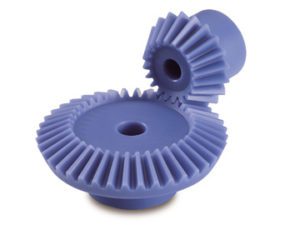
Image credit: QTC Metric Gears
When determining whether a plastic gear will be suitable for a particular application, the most critical factor is environment. Plastics are less dimensionally stable than metals, and their strength and stiffness characteristics are heavily dependent on temperature and can change with exposure to water or chemicals. (Moisture causes many plastic materials to swell, and chemical exposure can cause them to either shrink or swell, depending on the chemical and the plastic.)
Plastic and metal gears also experience different types of contact under load. Metal gears have primarily line contact, with one tooth in mesh at a time. But plastic gear teeth have an involute surface that deforms under load, distributing the contact pressure across a larger surface and allowing contact between adjacent teeth. This provides load sharing among teeth, and helps to improve the life of plastic gears in some applications – especially those with high impact loads and relatively low continuous loads.
The lighter weight of plastic gears means they also have lower inertia than their metal counterparts, which is essential for aerospace and some military applications. Most plastic gears are capable of running without lubrication or can be embedded with lubricating materials (such as graphite, silicone, or PTFE). However, some operating conditions benefit from, or even require, lubrication. Choosing a lubricant for plastic gears should take into consideration the environmental, load, and speed conditions that the gears will operate in. If the lubricant isn’t compatible with the plastic material, stress cracking or even failure of the plastic can result.
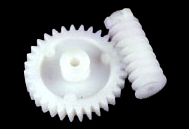
Due to their primarily sliding contact, worm gears experience high temperature rise, which can decrease the strength and increase the wear of plastic materials. Therefore, speed capability is limited for plastic worm gears, and lubrication is typically recommended.
The variety of plastics that are suitable for gear applications is extensive, but common choices include nylon, acetyl, polycarbonate, polyphenylene sulfide, and polyurethane. The addition of glass fiber can improve the stiffness and heat conductivity of some materials, although it reduces the material’s fatigue endurance. For better tooth strength and lower cost – relative to machining – plastic gears can be processed by injection molding. However, machined plastic gears can be produced to meet higher AGMA quality levels than can be achieved with injection molded versions.
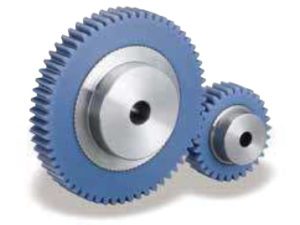
Image credit: Kohara Gear Industry Co., Ltd.
Feature image credit: QTC Metric Gears

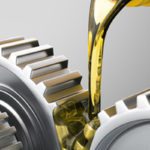

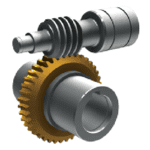
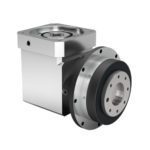
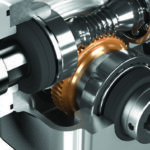

Leave a Reply
You must be logged in to post a comment.